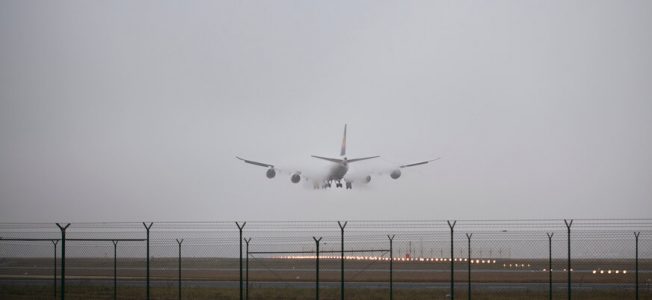Are you paying enough attention during each ILS approach?
I’ll never forget my first autoland. It started like every other ILS approach, but when it get to 100 feet above the ground, moving at 130 kts and you can’t see a darn thing, things are not like other ILS approaches. To say it gets your attention is an understatement!
Oh sure, it’s fun AFTER you touch down in the middle of the runway and get it slow enough to taxi to the terminal (if you can find the terminal in the fog). And it’s all fun when you’re saying goodbye to the passengers and laughing about how the airplane makes better landings than the FO does (hysterical, right?).
But seriously, the crew is hyper-vigilant when they know the weather is bad enough to require an autoland. (Does it bother anyone else that when the weather is skanky, we are required to autoland)? Everything about the approach must be perfect: the callouts are meticulous, the Captain has their hands hovering over the controls and the throttles, the FO is staring at the vast nothingness out the window trying to pick up that soft glow of the airport that says “almost there.”
I was taken aback when the FAA came out with a new warning for crews during autoland approaches. I almost laughed at the headline: “FAA Warns Pilots: Stay alert during autoland approach.” We’re not up there looking for the nearest restaurant, you know; this is serious stuff, and we get that.
But that’s not what the FAA is referring to. Instead, they are talking about interference near the ILS-protected areas. These protected zones are designed to keep vehicle traffic and taxiing aircraft away from the critical localizer area when the ceiling is below 800 ft or visibility below 2 miles. The problem occurs when flight crews decide to make autoland approaches when the weather is better than those minimums and without telling ATC.
Critical area protection is not required when the weather is better than 800 and 2, and because of that, most towers do not keep that area clear if the weather is marginal. But sometimes crews want to stay current or meet the recency of experience requirements, so they decide to fly an autoland.
Bad idea! Several reports indicate localizer deviations when those critical areas were not protected, even causing one crew to momentarily touch down in the grass as they initiated a go-around.
Of course, these deviations could erroneously happen even if the weather does require protected areas. For this reason, the FAA is encouraging pilots to always inform ATC when they will be performing an autoland approach, regardless of the weather. They also recommend (very strongly) that operators keep their manuals current with briefings, stabilized approaches, go-around procedures, and overall SOP’s for ILS approaches. And remember, remain alert during autolands.
RELATED READING
RELATED CTS TRAINING










